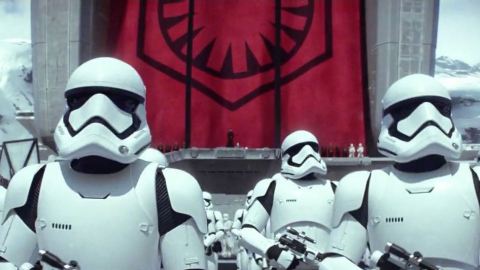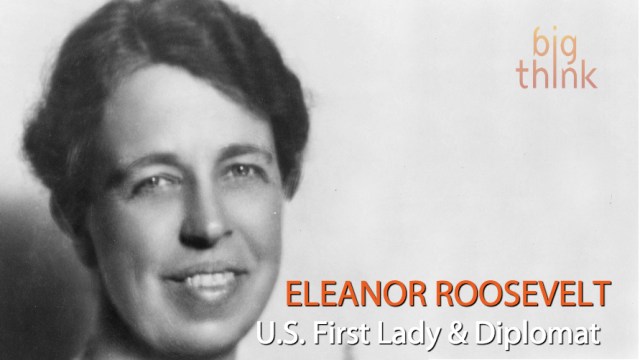70 Years Later, World War II Still Defines Good and Evil

If you watched the new Star Wars trailer last week, you probably spotted some very Leni Riefenstahl-esque scenes featuring stormtroopers: the massive architecture, uniform lines of troops, dominating symbols of power.
The references to Nazi Germany aren’t what you’d call subtle. They don’t need to be. We all get what’s going on. We understand all that’s being communicated in the image above. This summer will mark the 70th anniversary of World War II’s end yet, despite the fact that most of us weren’t alive during that time, the war’s far-reaching shadow remains today as vivid as ever.
Historian Anthony Beevor explored this topic in an article published last week at The Daily Mail. He asks what it is about the Second World War that keeps it so influential in contemporary art and storytelling. Why does the current population take such interest in films such as Fury, The Imitation Game, and Unbroken? Why, Beevor asks, does World War II have such a huge effect on the young?
“I think it is because we now live in a demilitarised society – a health-and-safety environment almost devoid of personal risk and moral decisions.
Those brought up in this new civilian age are therefore intrigued by intensely personal questions: would I have survived both the physical and psychological strains? Would I have shot or mistreated civilians and prisoners if ordered?
I think it continues to captivate us because no other period offered such huge moral choices.”
Beevor believes that our current world is relatively bereft of conflict and moral dilemma. The reason World War II remains so influential is because it represents situational extremes to which we today cannot relate. Our current society is a global one built around “enlightened attitudes” pertaining to the value of life and the fallibility of authority. The 1940’s seem so foreign to us. That’s why it’s exciting.
Beevor also makes several interesting points about how we too often (wrongly) look to World War II as a teaching tool for the future. History is not predictive, says Beevor, and we’d be better off if we realized not every new despot has to be branded “the new Hitler.” Our familiarity with the war’s horrors allows us a reference point for contemporary issues, for better or for worse.
This final point relates to something I’d like to add. Those who compose stories frequently rely on cultural and character archetypes to serve as structural building blocks. World War II, in all its conflict and imagery, has ascended to this level in relatively quick speed. Hitler and the Nazis have quickly been solidified as our cultural reference point for unchecked evil. You see it turn up again and again in films like V for Vendettaand the Star Wars franchise. The imagery of the Second War is indelibly tattooed onto our minds because it offers us a way to manifest the extremes of good and evil. The stakes were never higher for the people of the world than they were in the time period between 1939 (or earlier) and 1945.
The war’s continued influence on storytelling can therefore be summed up simply. If you want to show that a character is as evil as they get, you reference Hitler. If you want to show that humans are capable of unspeakable horrors, you reference the Holocaust. If you want to tell a story about sacrifice, betrayal, suffering, or redemption, you’re not going to find any more powerful reference point than an event during World War II. It’s the end of the line. The cultural nadir. The extreme beyond all extremes.
And let’s certainly hope it remains that way.
Read more at The Daily Mail
In the video below, Life of Pi novelist Yann Martel discusses the power of allegorical fiction using his novel Beatrice and Virgil, an allegory based on the Holocaust, as an example:
Photo credit: Screencap from YouTube





